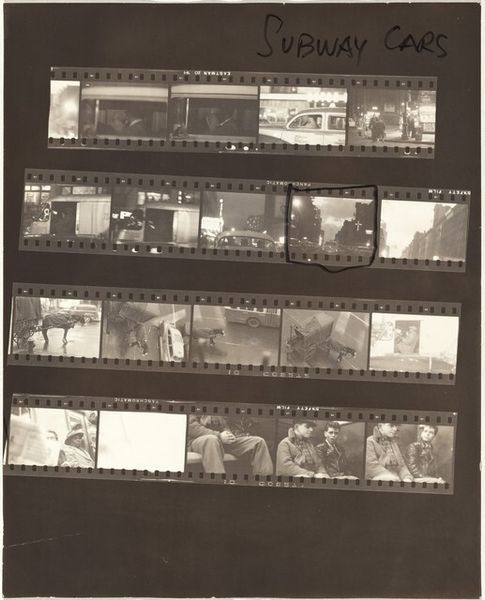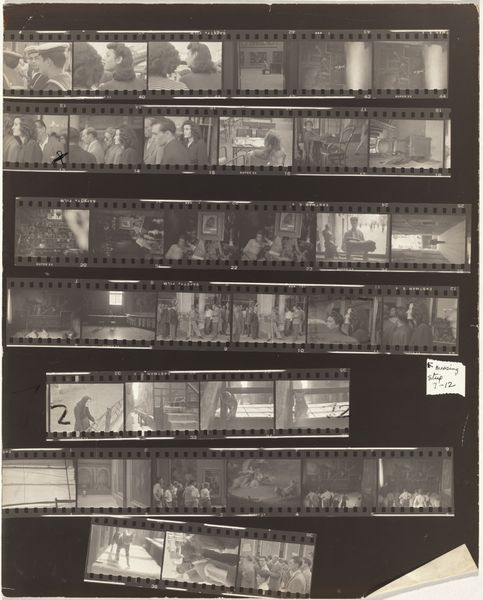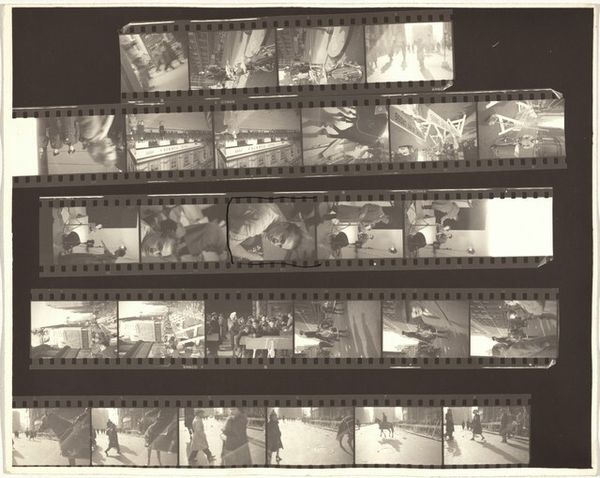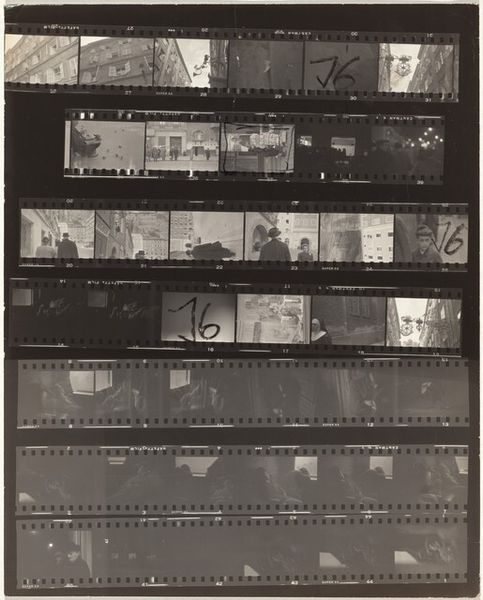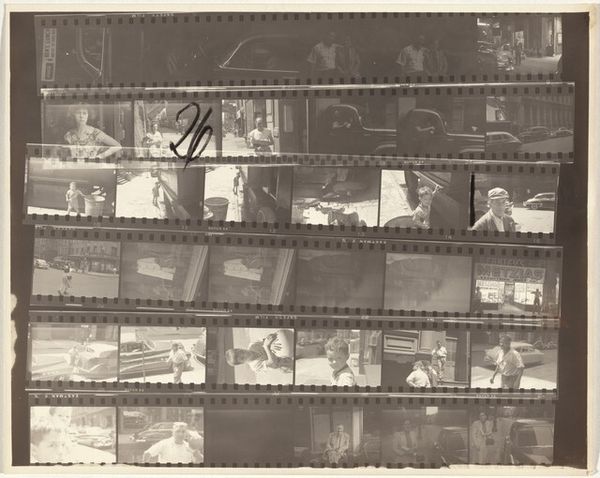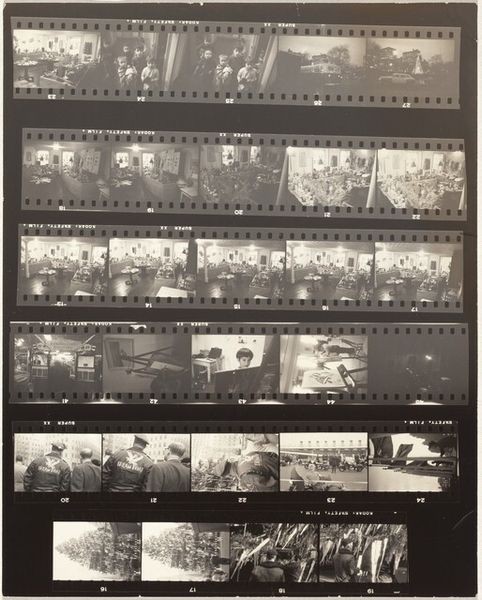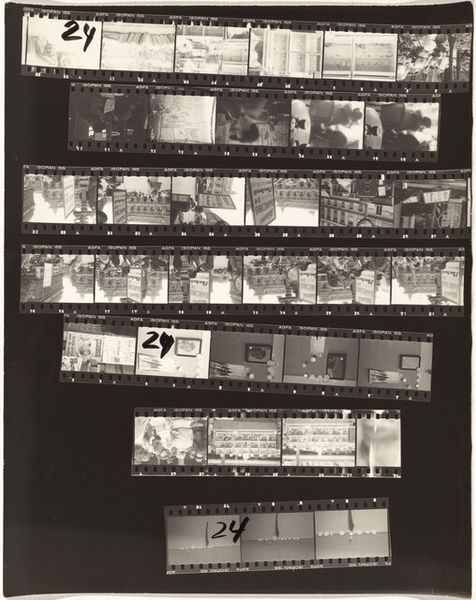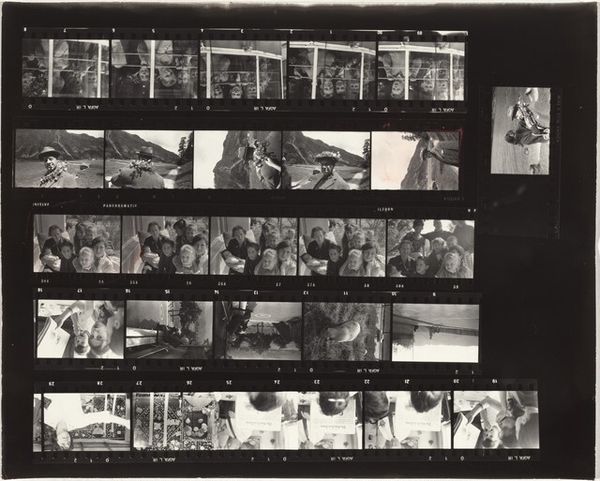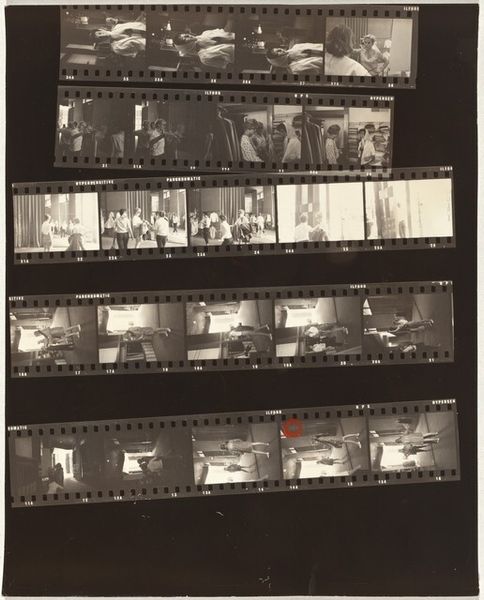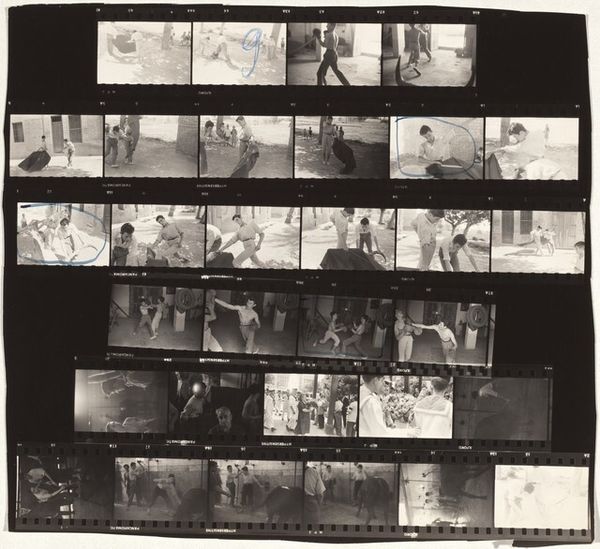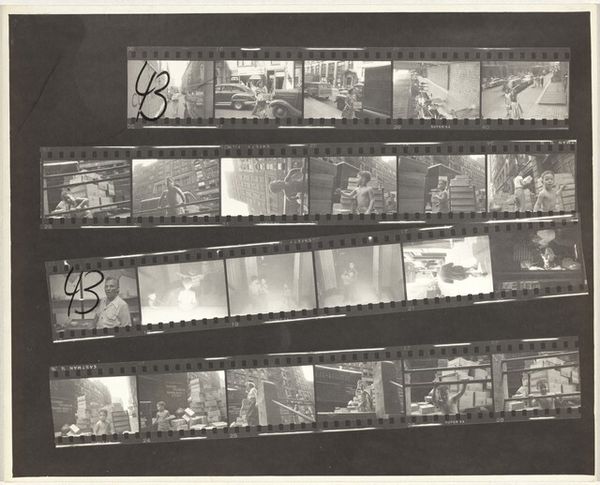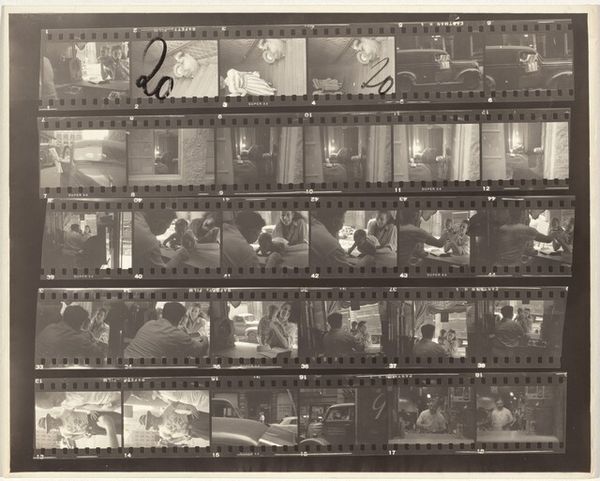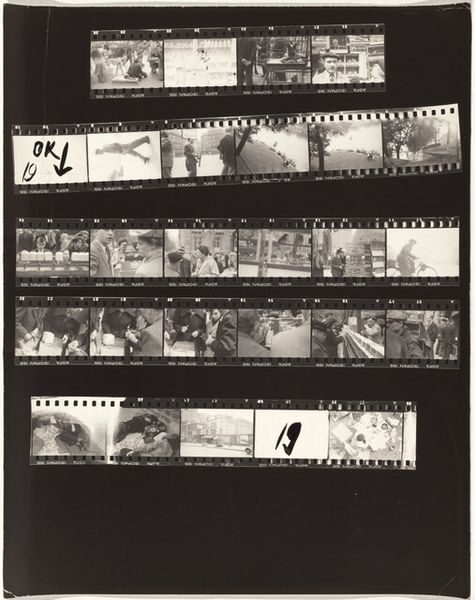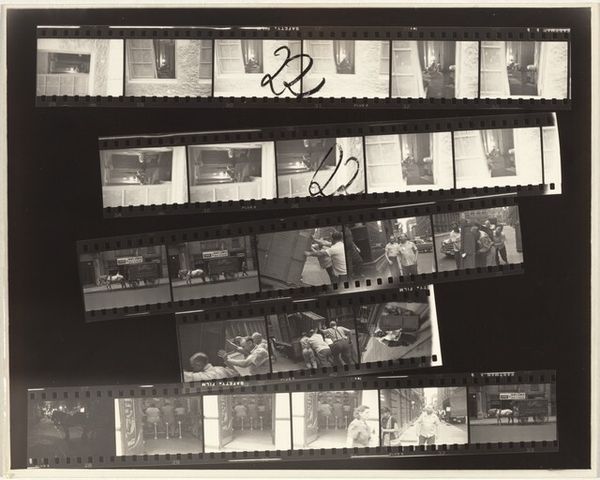
print, photography
#
print photography
# print
#
street-photography
#
photography
#
pop-art
#
modernism
Dimensions: overall: 20.2 x 25.3 cm (7 15/16 x 9 15/16 in.)
Copyright: National Gallery of Art: CC0 1.0
Curator: This is Robert Frank's "11th Street story 15," taken in 1951. It's a photography print presenting a sequence of images captured on a strip of film. What's your first reaction to it? Editor: The immediate feeling is a sort of fragmented reality. The sequential images give it a staccato rhythm; like snapshots from a life, a cinematic collage of moments. Curator: Indeed. Frank was very deliberate with his cropping and sequencing. Look how the grain and contrast push against the traditional notions of photographic clarity. These were choices against the polished studio photography that predated it. It speaks to postwar anxieties and a shift in photographic aesthetic, influenced by photographers like Walker Evans. Editor: Agreed. It seems to echo the anti-establishment tone of Beat Generation writers and artists and I think this work challenges the romantic image of 1950s America by capturing what may be regarded as the day-to-day lives. The fragmented scenes become social commentary. The man with the package for example – a seemingly inconsequential frame is somehow also laden with post-war realities: labour, duty, social role. Curator: Precisely. And observe how Frank juxtaposes seemingly disparate images. Notice the people at the street corner contrasted with what seems to be commercial store display or the almost tilted view from what seems to be a car. Editor: That dissonance, I think, is key. It disrupts the viewer's expectations. Each individual frame has compositional merit of its own, and Frank has created new meaning by stringing these distinct moments into something altogether novel. The dark borders of the film roll create rhythm; as a result, it feels strangely akin to a musical score! Curator: Absolutely. Its brilliance, to my mind, rests in its visual language, communicating more than mere literal representation. And that, precisely, became a seminal attribute in the evolving photographic style that we see, through, let's say, Pop Art. Editor: I see that. By embracing this aesthetic and highlighting what one may casually refer to as 'imperfections,' Robert Frank made it possible for photographers and the larger art audience to think more seriously about image-making within culture. Thank you for this! Curator: A delight to reflect alongside you.
Comments
No comments
Be the first to comment and join the conversation on the ultimate creative platform.
